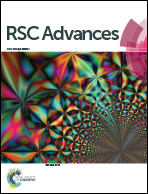Mechanism and stereoselectivity in NHC-catalyzed β-functionalization of saturated carboxylic ester†
Abstract
To understand the mechanism and origin of the stereoselectivity of the [3 + 2] annulation reaction between a carboxylic ester and an isatin generating spirooxindole lactone catalyzed by N-heterocyclic carbene (NHC), density functional theory (DFT) calculations have been carried out. DFT results indicate that the catalytic cycle begins with the coupling of the catalyst with benzotriazole ester, followed by α-deprotonation to produce the enolate intermediate. The subsequent 1,4-proton transfer affords the homoenolate intermediate. The next crucial step is the stereoselective C–C bond formation. Then proton transfer takes place leading to the formation of the lactone intermediate. Finally, the elimination of the catalyst furnishes the final product. The presence of 1-hydroxybenzotriazole (HOBt) dramatically accelerates the proton transfer step. More importantly, HOBt has a non-negligible impact on stereoselective C–C bond formation, and the SR-configured product is the major stereoisomer of the annulation product, which is in good agreement with the experimental observations. The differential π⋯π stacking, C–H⋯π, lone pair (LP)⋯π and repulsion interactions are found to be responsible for the stereoselectivity. The obtained mechanistic insights should provide valuable information for understanding the important roles of the NHC catalyst and HOBt additive and be helpful for designing better NHC catalysts for this kind of reaction.



 Please wait while we load your content...
Please wait while we load your content...